Nestled in the heart of Hoi An Ancient Town, a UNESCO World Heritage Site in Vietnam, the Japanese Bridge (also known as Chùa Cầu or the Japanese Covered Bridge) stands as a timeless testament to cultural fusion and historical resilience. Spanning a small canal off the Thu Bon River, this 18-meter-long wooden structure connects Tran Phu Street and Nguyen Thi Minh Khai Street, drawing travelers from around the globe with its enchanting architecture and rich backstory.
But beyond its picturesque red lacquered wood and yin-yang tiled roof, the Japanese Bridge in Hoi An carries five epic stories that elevate its status from a simple crossing to an iconic landmark. This guide will unravel the bridge’s mysteries, offer practical travel tips, and inspire your next visit to this Vietnamese gem.
Story 1: The Legend of Namazu – A Monster-Taming Marvel
One of the most captivating tales tied to the Japanese Bridge in Hoi An is the legend of Namazu, a mythical Japanese monster believed to cause earthquakes and floods. According to folklore, Namazu stretched its enormous body from India (its head) through Vietnam (its spine) to Japan (its tail).
The Japanese merchants who settled in Hoi An during the 16th century feared that the town, located along this mythical creature’s back, was vulnerable to its destructive movements. To subdue Namazu, they constructed the bridge as a symbolic “sword” to pin down the monster, bringing stability to the region.
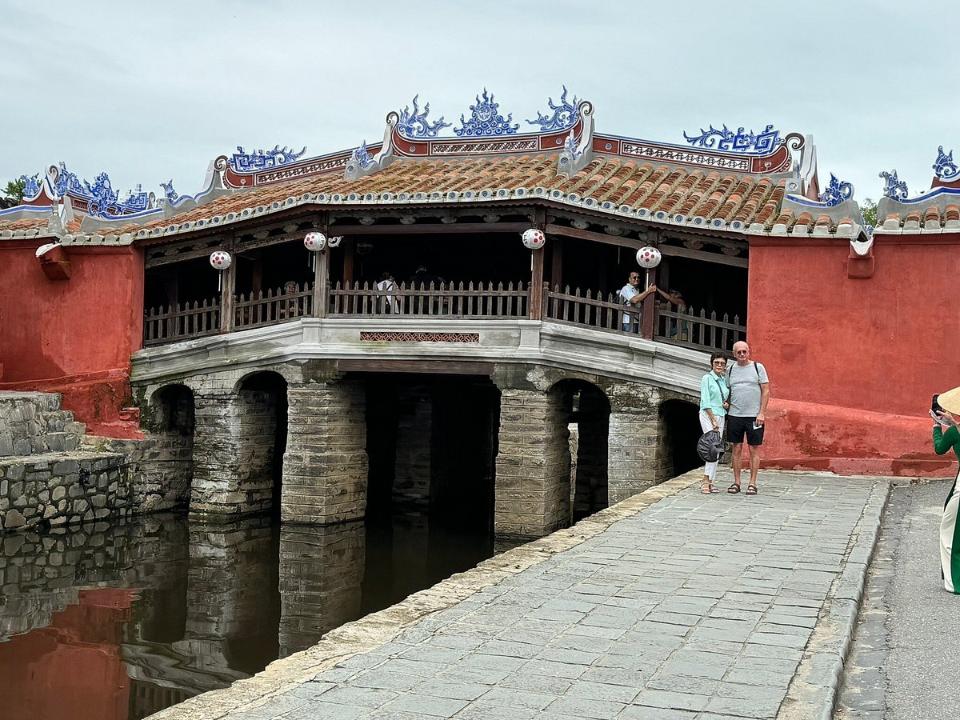
The Japanese Bridge in Hoi An is nearly 500 years old and has witnessed countless stories (source: collected)
This story adds a layer of spiritual significance, explaining the small temple atop the bridge dedicated to Tran Vo Bac De, the northern deity believed to control weather and protect against natural disasters. As you walk across the bridge, imagine the ancient belief that each step reinforces this protective act—a truly epic origin story!
Story 2: A Bridge Built by Traders – The Japanese Legacy
The Japanese Bridge in Hoi An owes its existence to the thriving trade community of the late 16th century. Japanese merchants, drawn to Hoi An’s bustling port, built the bridge around 1593 to connect their quarter on Nguyen Thi Minh Khai Street with the Chinese quarter on Tran Phu Street.
Completed by 1595, this structure facilitated commerce and fostered cultural exchange. The bridge’s design reflects a harmonious blend of Japanese, Vietnamese, and Chinese architectural styles, from its wooden frame to the intricate carvings. After the Tokugawa Shogunate recalled Japanese traders in the 17th century, the bridge remained a lasting legacy, preserved and adapted by local communities.
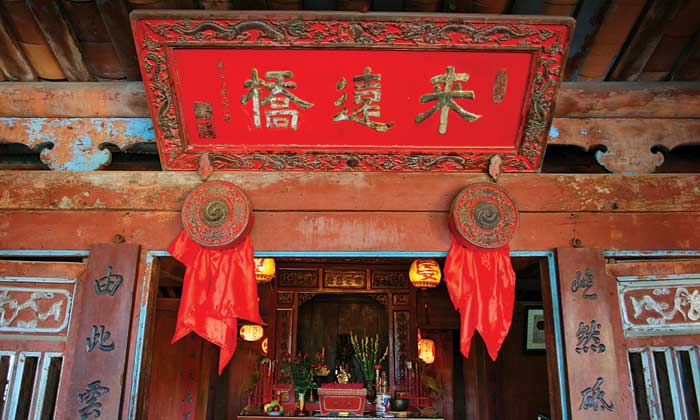
Today, it’s a living museum, offering a glimpse into Hoi An’s golden age as a multicultural trading hub—a story that resonates with every creak of its wooden planks.
Story 3: The Naming Saga – From Lai Vien Kieu to Chua Cau
The bridge’s name evolution is a story in itself. Initially called the Japanese Bridge due to its creators, it gained a more poetic title in 1719 when Lord Nguyen Phuc Chu visited Hoi An and inscribed three Chinese characters—“Lai Vien Kieu” (meaning “Bridge to Welcome Guests from Afar”)—above the entrance. This name celebrated its role as a welcoming gateway for traders.
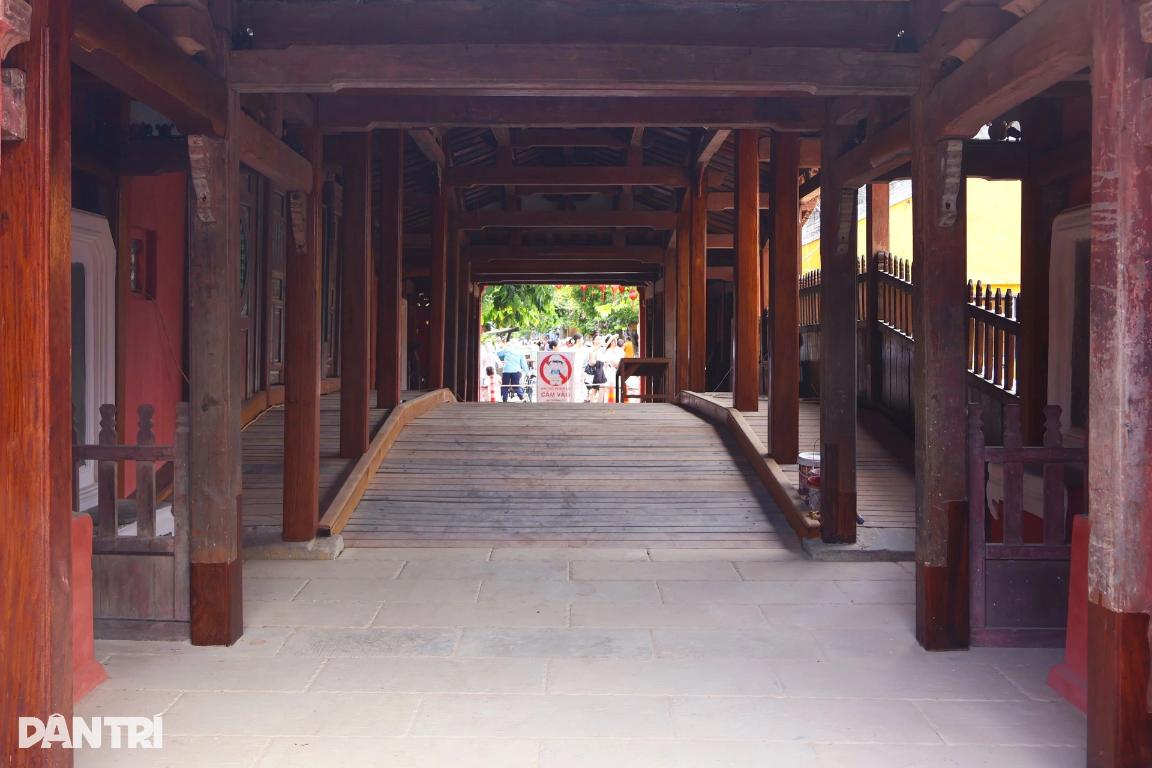
Crossing the Japanese Bridge in Hoi An feels like stepping into legendary tales of history (source: Dantri)
Over time, the addition of a small temple led locals to nickname it Chùa Cầu (Pagoda Bridge), a name that stuck. Recognized as a National Historic-Cultural Heritage Site in 1990, the bridge’s dual identity reflects its evolving purpose—from a practical crossing to a spiritual and cultural icon. This naming saga invites visitors to ponder the layers of history etched into its structure.

Today, its official Vietnamese name is Chùa Cầu, and its international name is Japanese Bridge (source: collected)
Story 4: Renovations Through the Ages – A Survivor’s Tale
The Japanese Bridge in Hoi An has weathered over 400 years, surviving floods, wars, and modernization through seven major renovations. The first, in 1763, was overseen by the Minh Huong Commune, followed by repairs in 1815, 1875, 1917, 1962, 1986, and 1996. The 1917 renovation under French colonial rule flattened the bridge for motorized vehicles, a change reversed in 1986 to restore its pedestrian charm.
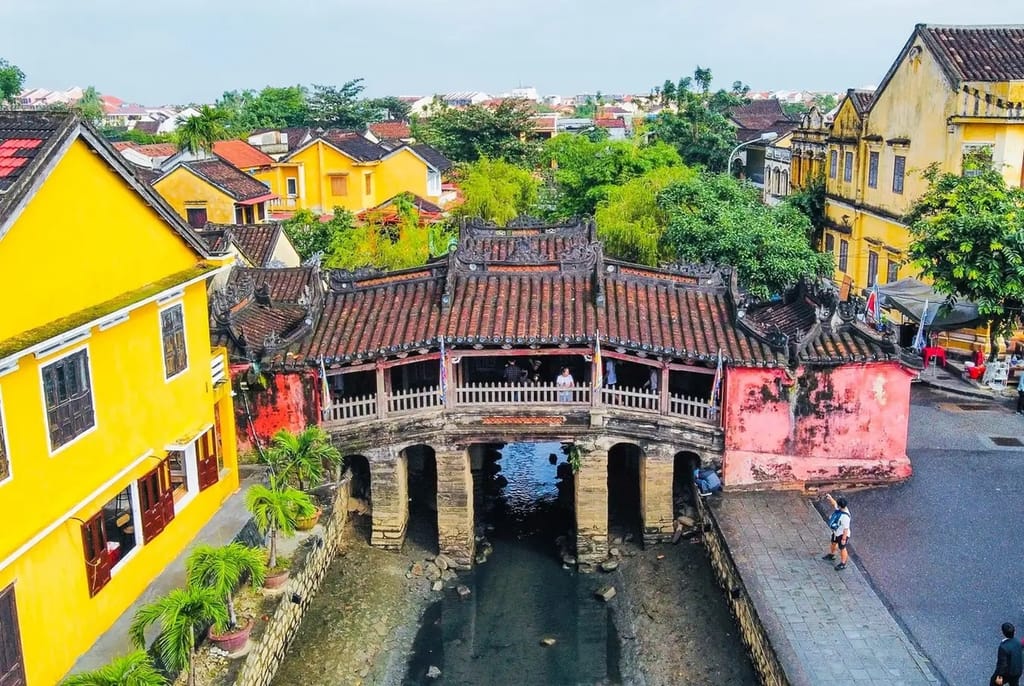
The ancient beauty of the Japanese Bridge in Hoi An in earlier times (source: collected)
The most recent significant restoration, in 2024, addressed structural damage from floods, ensuring its longevity. Each renovation tells a story of resilience, with the bridge adapting while preserving its original essence. As you cross, notice the weathered wood and stone piers—each mark a chapter in this survivor’s tale.
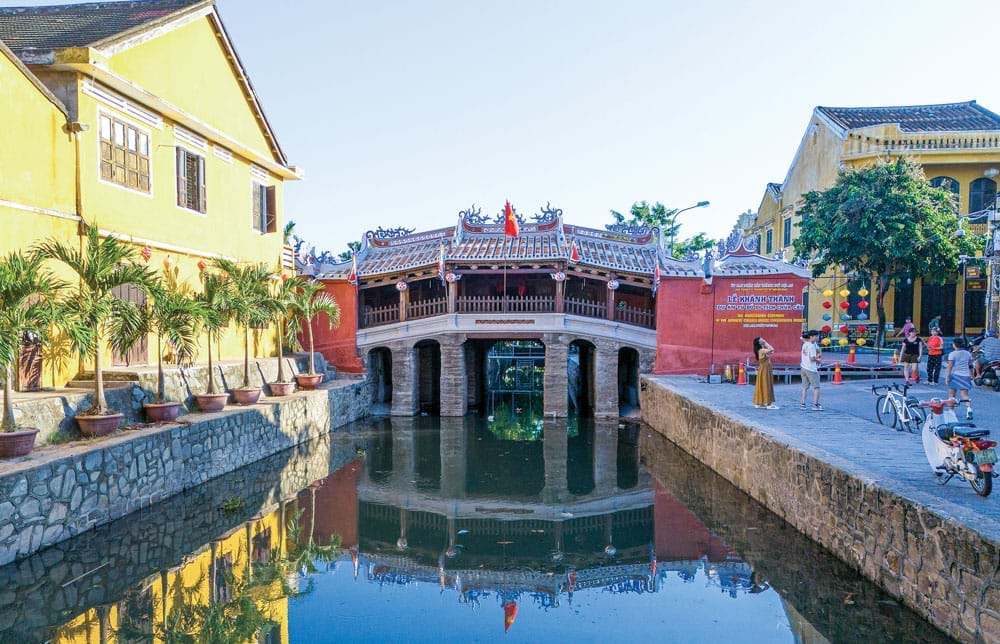
The latest image of the Japanese Bridge in Hoi An after its 2014 restoration (source: collected)
Story 5: The 20,000 VND Banknote Icon – A National Symbol
Perhaps the most visible sign of the bridge’s fame is its image on the back of Vietnam’s 20,000 VND banknote, first issued in 2006. This honor reflects its status as a national treasure, symbolizing Hoi An’s cultural heritage and the enduring bond between Vietnam and Japan.
The banknote features the bridge’s elegant silhouette, capturing its spiritual and historical significance. For visitors, holding up the note beside the real structure is a popular photo op, blending past and present. This story of recognition elevates the bridge beyond a local landmark, making it a point of pride for Vietnamese people and a must-see for travelers.

A favorite check-in idea for tourists at the Japanese Bridge in Hoi An (source: collected)
Why Visit the Japanese Bridge in Hoi An?
The Japanese Bridge isn’t just a historical site—it’s an experience. Its unique architecture, blending red lacquered wood and stone with a yin-yang tiled roof, creates a photogenic backdrop, especially at night when lanterns illuminate the scene. The small temple inside offers a quiet space to reflect, while the surrounding streets buzz with local life, from cafes to artisan shops.
It’s ideal for history lovers, photographers, and anyone seeking an authentic cultural immersion. Plus, its central location makes it a perfect starting point for exploring Hoi An Ancient Town.
Practical Travel Guide for Visiting
Location and Access: The bridge is at the west end of Tran Phu Street, Hoi An, Quang Nam Province. It’s a 5-10 minute walk from the Central Market or a short cyclo ride from most hotels. No entrance fee is required to cross, but a VND 120,000 (~$5 USD) ticket for Hoi An’s Old Town attractions (covering 22 sites) is needed to enter the temple area.
Best Time to Visit: Early mornings (6-8 AM) offer a serene experience with fewer crowds. Evenings (6-9 PM) are magical with lantern light, though expect more tourists. Avoid the rainy season (October-November) due to flood risks, as noted in recent updates.
How to Get There: From Da Nang (30 km away), take a taxi (about 400,000 VND/~$17 USD), a Grab ride, or a shuttle bus (100,000 VND/~$4 USD). Within Hoi An, walking or renting a bicycle (50,000-100,000 VND/day) is convenient.
Things to Do: Cross the bridge to admire its carvings and temple, snap photos (especially at night), and visit nearby spots like the Tran Family Chapel or Ha Ha Art in Everything for souvenirs. The early spring festival (full moon of the first lunar month) is a vibrant time to witness local rituals.
Tips: Wear comfortable shoes for the slight incline, and respect the temple by dressing modestly. Check for renovation updates (e.g., recent 2024 work) via local tourism sites or your hotel, as access may be limited.
Nearby Attractions to Enhance Your Trip
- Tan Ky Old House: A 200-year-old residence showcasing Vietnamese architecture, a 5-minute walk away.
- Cam Thanh Coconut Village: A 15-minute bike ride for basket boat rides amid lush groves.
- An Bang Beach: A 10-minute drive for a relaxing seaside break.
- Hoi An Night Market: A 5-minute walk, perfect for lantern shopping and street food.
Today, it’s a hub for both locals and tourists, with lantern-lit evenings creating a romantic ambiance. The bridge’s preservation efforts, supported by the Quang Nam government, ensure its stories endure, making it a living piece of history.
Contact Lux Travel DMC to plan your journey of immersion into the nature and culture of Vietnam and Southeast Asian countries, ensuring satisfaction that exceeds your expectations.
